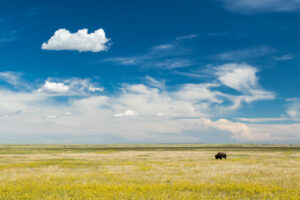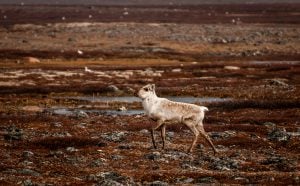
Environment
The sixth extinction
The planet is in the midst of drastic biodiversity loss that some experts think may be the next great species die-off. How did we get here and what can be done about it?
- 4895 words
- 20 minutes
This article is over 5 years old and may contain outdated information.
Wildlife

It would seem the sage grouse has stirred up more than Prairie dust.
Environment Canada recently announced it would issue an emergency order for the first time ever to protect a rare Prairie bird.
According to the Committee on the Status of Endangered Wildlife in Canada (COSEWIC), there are fewer than 150 greater sage grouse left in the sagebrush grasslands of Alberta and Saskatchewan, the bird’s natural habitat.
The unprecedented decision would put restrictions on not only federal land, but also provincial land, therefore protecting crucial grouse habitat.
But environmentalists and as Environment Canada have known about the bird’s population plight since 1998, when the bird was first deemed endangered.
So why has it taken 15 years for this progress?
“Because of the way the act was written, it initiates the protection of a species but everything else takes a while,” says James Pagé, a species at risk and biodiversity program officer with the Canadian Wildlife Federation.
Here’s how Canada’s Species at Risk Act works:
Selecting the species to protect
Protecting a species under the Species at Risk Act begins with COSEWIC, a body of scientists that meets twice a year to discuss possible candidates.
There are currently 135 endangered animal species in Canada. Also on the species-at-risk list are threatened animal species and animal species warranting special concern. Currently, 74 threatened species and 74 special concern species have also made the list.
Once a species is selected, COSEWIC must provide a scientific assessment of the animal in question to the minister of the environment or the Department of Fisheries and Oceans. COSEWIC has one year to complete this process.
The role of the minister of the environment
After the minister receives the assessment from COSEWIC, she has 90 days to make it accessible to the public. She must also forward the assessment, with her recommendation, to the Governor General and federal cabinet.
Once the assessment reaches cabinet, the Governor General, acting on the advice of the federal cabinet, has nine months to decide whether or not a species should be listed as endangered, threatened or of special concern.
If a decision is not reached within that time, the species is automatically added to the species-at-risk list. However, Pagé says, this phase has been know to last more than nine months.
“If the Governor thinks there are other stakeholders, particularly socio-economic stakeholders affected they can invoke what’s called extended consultations, which can take years.”
Consultations often involve First Nations, provincial officials and Wildlife Management Boards and have affected several species including the grizzly bear, caribou, American eel and the sage grouse.
Crafting a recovery strategy
Once stakeholders have been consulted, a species recovery strategy can start to take form. Recovery strategies outline an animal’s crucial habitat, as well as steps needed to rescue the species from extinction.
Endangered species, threatened species and species of special concern all receive recovery strategies or management plans, however the timeline for each varies. An endangered species recovery plan must take no more than a year to prepare, threatened species recovery plans may take up to two years and management plans for species of special concern can take up to five years to draft.
These plans, Pagé says, are “legally mandated under the species at risk act to be done within their timelines.” However, due to backlog and a limited amount of resources, timelines are not always met.
More than 46 per cent of species included in the Species at Risk Act have not yet received recovery strategies.
From planning to action
The next step is an action plan.
“An action plan is the real area where conservation actions come into force,” Pagé says.
Yet of the 245 recovery and management plans that the government has published through the Species at Risk Act, just seven action plans have been completed.
“We are stuck in the planning phase and not the doing phase,” Pagé says. “It is getting there, it’s just taking a long time to deal with the logistics of the act.”
Are you passionate about Canadian geography?
You can support Canadian Geographic in 3 ways:

Environment
The planet is in the midst of drastic biodiversity loss that some experts think may be the next great species die-off. How did we get here and what can be done about it?

Wildlife
An estimated annual $175-billion business, the illegal trade in wildlife is the world’s fourth-largest criminal enterprise. It stands to radically alter the animal kingdom.

Environment
Environment and Climate Change Minister Steven Guilbeault made big commitments at the international biodiversity conference held in Montreal in December. What does that mean on the ground?

Wildlife
Habitat loss, pollution, climate change have all contributed to steep declines of some species since 1970